Asthma is a common long-term inflammatory disease of the airways of the lungs. Asthma is a condition in which a person’s airways become narrow, swell and produce the extra mucus, which makes the body difficult to breathe.
Asthma cannot be cured, but yoga for asthma is the list of yoga asanas that help a person, avoid or slow down the triggers of asthma. Symptoms of asthma vary from person to person such as shortness of breath, chest tightness or chest pain etc.
The most effective treatment for asthma is avoid cigarette smoking, staying away from polluted places, doing breathing exercises and yoga daily.
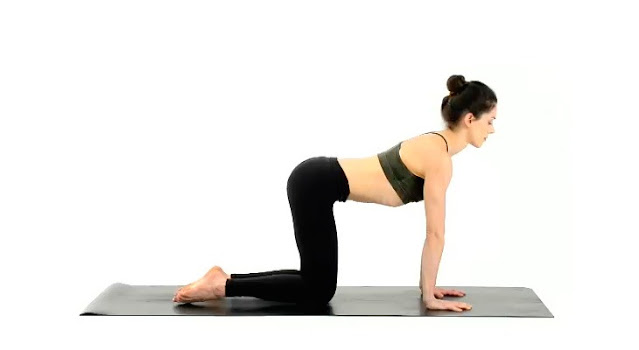
List of yoga poses for asthma
- Bridge PoseLie on the floor on your back and keep your knees bent. Extend your arms along the floor and keep them flat. Press your feet and arms firmly onto the floor. Exhale your breath as you lift your hips toward the ceiling.
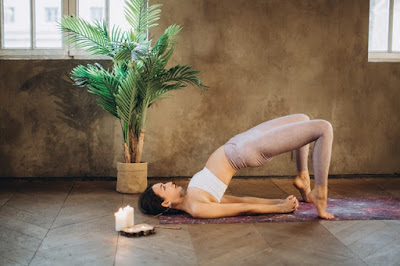
Benefits of bridge pose
- Stretches chest, neck, spine.
- Strengthens the back, buttocks, and hamstrings.
- Stretches hips.
- Improves blood circulation in the body.
- Easy yoga poseSit in a comfortable position and keep your legs crossed. Place your hand on your knee and take a deep breath and then release it slowly, do it repeatedly for 5-10 minutes.

Benefits of easy yoga pose- It Promotes full and complete breathing.
- It increases oxygen supply to the blood.
- Increased oxygen supply to the blood helps controlling triggers of asthma.
- Releases muscular tension.
- Butterfly PoseSit on your yoga mat stretched with your legs in front of you. Keep your spine straight and bend your legs at the knees, such that the soles of your feet are touching each other. Then move your thighs up and down, just like the wings of a butterfly.
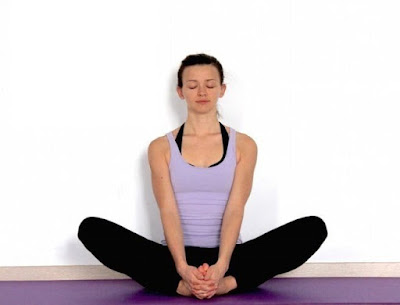
Benefits of butterfly pose
- Improves abdominal organs, ovaries, kidneys and bladder.
- Improves general circulation of blood in body.
- Stretches the inner thighs, knees, and groins.
- Helps to relieve mild depression.
- Helps to relieve the symptoms of menopause.
- Cobra poseLie on the floor and Press the tops of the feet and thighs and the pubis firmly into the floor, On an inhalation, take your arms straight to lift your chest up from the floor, only to the height at which you can maintain a connection through your pubis to your legs.
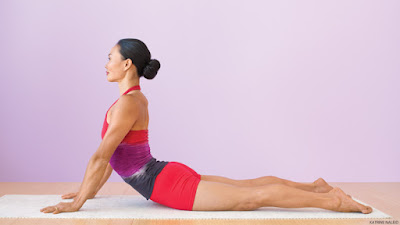
Benefits of cobra pose
- Stretches the muscles of shoulders, and chest .
- Decreases stiffness of lower back.
- Strengthens the arms and shoulders.
- Increases flexibility.
- Invigorates the heart.
- Corpse PoseLie in a comfortable position on the mat and then take breath slowly from your nose and then exhale your breath from the mouth slowly. The release breath should be double than the intake breath.
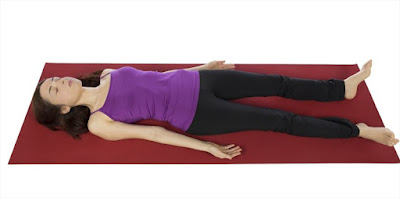
Benefits of corpse pose
- It helps to calm the brain and help to relieve stress and mild depression.
- It helps to relax the body.
- It helps to Reduce headache.
- It helps to lower blood pressure.
- Pranayama
 Pranayama is an appropriate control over the process of breathing. It refers to breathing exercises that are used for relaxation, concentration and meditation. Doing pranayama daily for 15-20 minutes can control your triggers of asthma. There are following variations of Pranayama:
Pranayama is an appropriate control over the process of breathing. It refers to breathing exercises that are used for relaxation, concentration and meditation. Doing pranayama daily for 15-20 minutes can control your triggers of asthma. There are following variations of Pranayama:
- Anulom-Vilom :It is simple inhaling from left nostril, stopping breath for some time and then exhaling from right nostril and vice versa.
- Kapal-bhati :In this, a long inhale is taken where as forceful exhale is done from nose with pressure, while stomach is vibrated in and out.
- Bhramari :In this, the exhalation process combines with vibrating sound from the throat.
- Sitali Pranayama :In this, the mouth and lips are kept in an ‘O’ formation. The tongue should touch the teeth and the shape of tongue is like a curled leaf. Then the tongue is protruded and curled out of the lips. Inhale fully and hold it for 5 seconds; side by side neck is flexed, so that Chin touches sternum (chest bone). Exhale slowly.
- Sitakari Pranayama :In this technique, the tongue is not curled and lips are parted. The rest of technique is same as of Sitali Pranayama.
- Ujjai Pranayama :In this the air is inhaled through both nostrils. Hold the breath. Exhale slowly and deeply till the lungs get empty. This activity is done for five minutes.
- Bhastrika Pranayama :Bhastrika means a bellow used in a furnace. In it the air is forcibly drawn in and out.
Breathing Exercises for Asthma
As their is no medication of asthma, only we can take prevention by avoiding the triggers, such as allergens and irritants which causes difficulty in breathing. We can control the triggers of asthma by regularly doing yoga and some breathing exercises for asthma. Doing below given breathing exercises for asthma for (15 minutes each exercise) can help you in long run.
- Diaphragmatic breathingSit comfortably, with your knees bent and keep your shoulders, head and neck relaxed. Place your one hand on your upper chest and the other just below your rib cage. Breathe slowly so your stomach moves out against your hand.
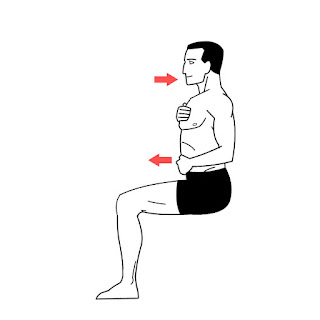
Benefits of diaphragmatic breathing
- It helps you to lower the stress.
- It lowers your heart rate.
- It helps to lower your blood pressure .
- This exercise is very useful for person suffering from asthma.
- Nasal breathingSit in a comfortable position and keep your legs crossed. Place your left hand on your left knee. and use your right hand’s thumb to close your right nostril and exhale breath completely. Inhale breath through your left nostril and then close the left nostril with your fingers.

Benefits of nasal breathing
- The nose adds moisture and warmth to inhaled air smoothly entered into the lungs.
- Nasal breathing, as opposed to mouth breathing, has important advantage for effective and efficient exercise.
- It allows more oxygen to body tissues.
- Nasal breathing is very easy to do and is very helpful for asthma patients.
- The Papworth methodIt involves breath slowly through your nose and breath out through pursed lips as if blowing out a candle. Your out breath should be double then your in breath.
Benefits of the papworth method
- Make the breath more controlled and efficient.
- It Reduces stress.
- It may reduce reliance on medications.
- Pursed lip breathingSit with your back straight. Inhale breath through your nose for 2-3 seconds, feel the air move in your abdomen. Purse your lips like you are blowing the hot food and then breathe out slowly. take twice the time to exhale as you took to breathe in. Then repeat.
Benefits of pursed lip breathing
- It helps you to take away from drugs.
- It gives you control on breath.
- It contributes to overall health.
- Yoga breathingSit in a comfortable position and keep your legs crossed. Place your hand on your knee and take a deep breath and then release it and do it repeatedly.

Benefits of yoga breathing- It Promotes full and complete breathing
- It increases oxygen supply to the blood
- Releases muscular tension and for deeper meditation
- Person suffering from asthma must do yoga breathing atleast 30 minutes a day, it prevents the frequent asthma attacks.
FAQs
Q:1 What is asthma?
OR
Meaning of asthma
Ans: Asthma is a common long-term inflammatory disease of the airways of the lungs. Asthma is a condition in which a person’s airways become narrow, swell and produce the extra mucus, which makes the body difficult to breathe.Q:2 Which exercises are best for asthma treatment
Ans: The best exercises for asthma are:
- Diaphragmatic breathing
- Nasal breathing
- The Papworth method
- Pursed lip breathing
- Yoga breathing
Q:3 Which yoga asanas or yoga poses are good for asthma?
Ans: The best yoga asanas for asthma are:- Easy yoga pose
- Butterfly Pose
- Bridge Pose
- Cobra pose
- Corpse Pose
- Pranayama
- Anulom-Vilom
- Kapal-bhati
- Bhramari
- Sitali Pranayama
- Sitakari Pranayama
- Ujjai Pranayama
Tags asthma exercises health yoga
